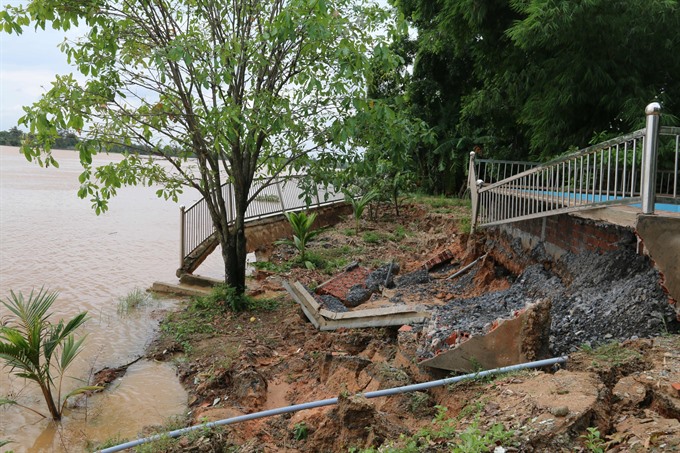 Society
Society

The People’s Committee of Biên Hòa City in the southern province of Đồng Nai will install cameras to monitor illegal sand exploitation on the Đồng Nai River.
 |
| Severe landslides happen due to illegal sand-mining along Đồng Nai River. The People’s Committee of Biên Hòa City in the southern province of Đồng Nai will install cameras to monitor illegal sand exploitation on the river. — VNA/VNS Photo Sỹ Tuyên |
ĐỒNG NAI — The People’s Committee of Biên Hòa City in the southern province of Đồng Nai will install cameras to monitor illegal sand exploitation on the Đồng Nai River.
The cameras will be installed on Tân Vạn and Ba Xê isles and in eight wards along the river where violations often occur, according to the Biên Hòa City’s Party Committee.
However, some of the areas do not have electricity lines, so the People’s Committee is working with the wards to remove obstacles and speed up installation of cameras.
Võ Văn Chánh, deputy chairman of Đồng Nai Province’s People’s Committee, said the province would also set up cameras in other locations like Long Thành, Nhơn Trạch and Vĩnh Cửu districts if the Biên Hòa installation is successful.
Thi Văn Dũng, deputy secretary of Biên Hòa City’s Party Committee, said the part of Đồng Nai River which runs through Biên Hòa City has high-quality sand.
The Party Committee has also directed agencies to devise a plan to protect sand resources.
The city’s two inspection teams that began work earlier this year include members of the police and military forces, and the municipal Department of Natural Resources and Environment.
They have identified dozens of illegal sand mining violators and have confiscated many vehicles.
Stone exploitation
Besides sand, enterprises in Đồng Nai Province extracted more than 15 million cubic metres of stone in the first nine months of the year.
In the last three months, they plan to extract more 6.5 million cubic metres of stone. The total stone output this year is expected to be 21.5 million cubic metres, a drop of 10.5 million cubic metres compared with last year.
Nguyễn Ngọc Hưng, deputy director of the provincial Department of Natural Resources and Environment, said that 32 quarries in the province had in recent years extracted 32 million cubic metres of stone annually.
To protect stone resources, early this year the Đồng Nai Department of Natural Resources and Environment began working with quarries to reduce stone exploitation.
As many as 19 quarries agreed to reduce the output. — VNS